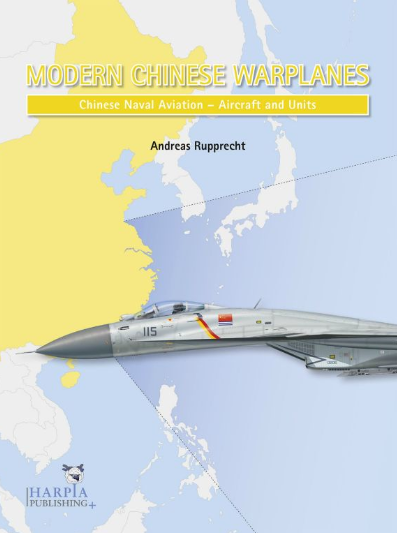Harpia is doing an update for their Modern Chinese Warplanes-book, something which is certainly needed, considering how things have changed during the last six years. The update also splits the original into several volumes according to branch. The Naval Aviation volume came out during the spring, while the Air Force one is hot off the printers. Army Aviation will then follow in April 2019.
From a Finnish (or even European viewpoint), China is largely a trading partner with a rather poor human rights record. Great power struggles in the Pacific and Thucydides traps are far away both geography-wise and psychologically. As such I will admit that my understanding of Chinese military aviation is rather limited, and the books filled a much needed void in my bookshelf.
In case anyone has missed it, China is rapidly starting to produce modern aircraft in a host of different classes, including both high-profile fighters such as the J-20 and lesser-known projects such as the Y-20 transport. On the other hand, the far-reaching organisational changes and updates to doctrine and training regimes during the last years are likely of even greater importance, and is only now (likely) reaching their final form. The books cover all of these aspects, including aircrafts currently in use (stretching from the An-2 derivative Nanchang Y-5 to the top-modern Chengdu J-20), weapons, doctrine, training curriculum, and last but not least an impressive full order of battle. The order of battle is likely the single most comprehensive and up-to-date one published in non-classified books, and explains both the current organisation as well as the roots it comes from.

The big question is if the book is too up-to-date? Especially in the case of the Naval Aviation one, questions still remain which units exactly have been reformed and which are still awaiting change. Operational secrecy and increased internet censorship inside China means that information isn’t always easy to come by. Here as well Rupprecht does a good job, as his long experience with the topic gives him the ability to piece together the available snippets of information to create the bigger picture. Importantly, he also clearly indicates which parts are confirmed, which are unconfirmed, and where there are alternative theories and explanations.

But as always there is some room for improvement. The otherwise excellent maps of the areas of operation for the different theatre commands are placed after their respective chapters, leading to the slightly confusing situation where you’re reading about one theatre command while looking at a map of the bases of another one. Another issue is the appearance of the Army Aviation, which is briefly mentioned in a number of places, especially when discussing the Air Force helicopters in use. The role of Army Aviation is never quite explained, and I was left somewhat wondering what exactly they do, and how it differs from the rotary-winged units of the Air Force. I can only assume this would have been clearer if all three volumes had been read together. As it now stands (and as it would for some other China-rookie only getting a single volume) it all remains rather fuzzy, and I found myself wishing for a few sentences on how the lines are drawn between the three branches. A third issue was that in a handful of places I found myself struggling to get a picture of how exactly the designations had changed during development of aircrafts (this was especially the case with the UAVs), though to be honest I am unsure about to what extent the author is to be blamed, and to what extent the Chinese drone programs simply have been complex. As a counter-balance, the chapters on the rather confusing family of different Soviet/Russian and Chinese ‘FLANKER’-variants is simply the clearest and most straightforward one I’ve come across over the years, and a joy to read.
However, even if there are a few minor things I dislike or would have chosen to do otherwise had I been the editor, there’s no denying that this is yet another great addition to the bookshelf of anyone interested in Chinese aviation. Personally I found greatest enjoyment in the descriptions of Chinese aircraft and airborne weaponry, but I certainly can see that anyone interested in developments in the South China Sea or potential Sino-Japanese clashes would find the OOB to be of even greater value. The books are also of the usual high-quality and hold up well to regular use (and abuse), and the illustrations include both a large number of colour photographs of high-quality as well as the excellent maps and tables which one has come to expect from Harpia. Note that the differences in size of the aviation arms are reflected in the books, as the Air Force one is considerably longer at 240 pages compared to 96 for the Naval Aviation.
Recommended.
The books were provided free of charge by Harpia for review. The ISBN numbers are 978-0-9973092-6-3 for the Air Force and 978-0-9973092-5-6 for Naval Aviation.




how do I get a copy of each?